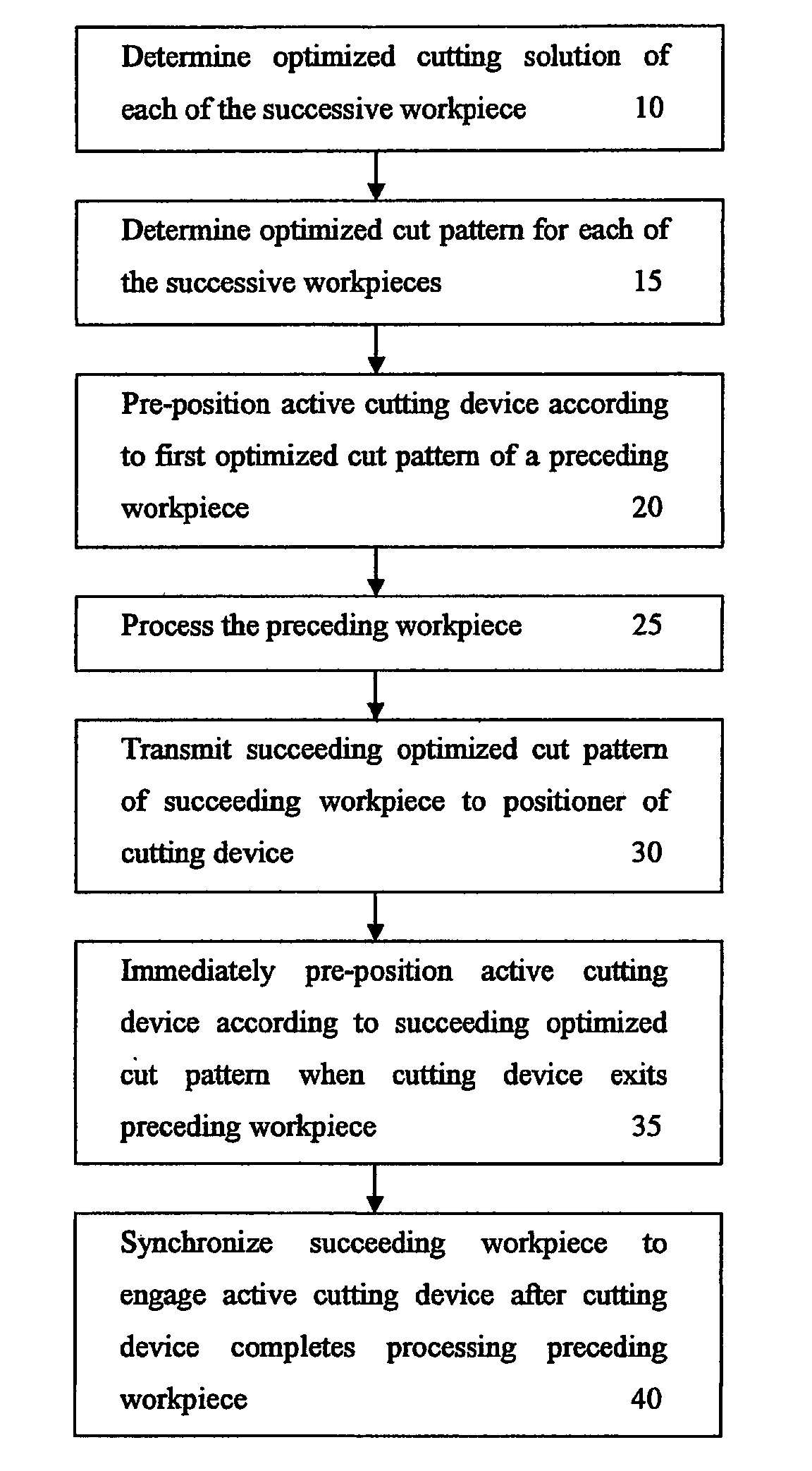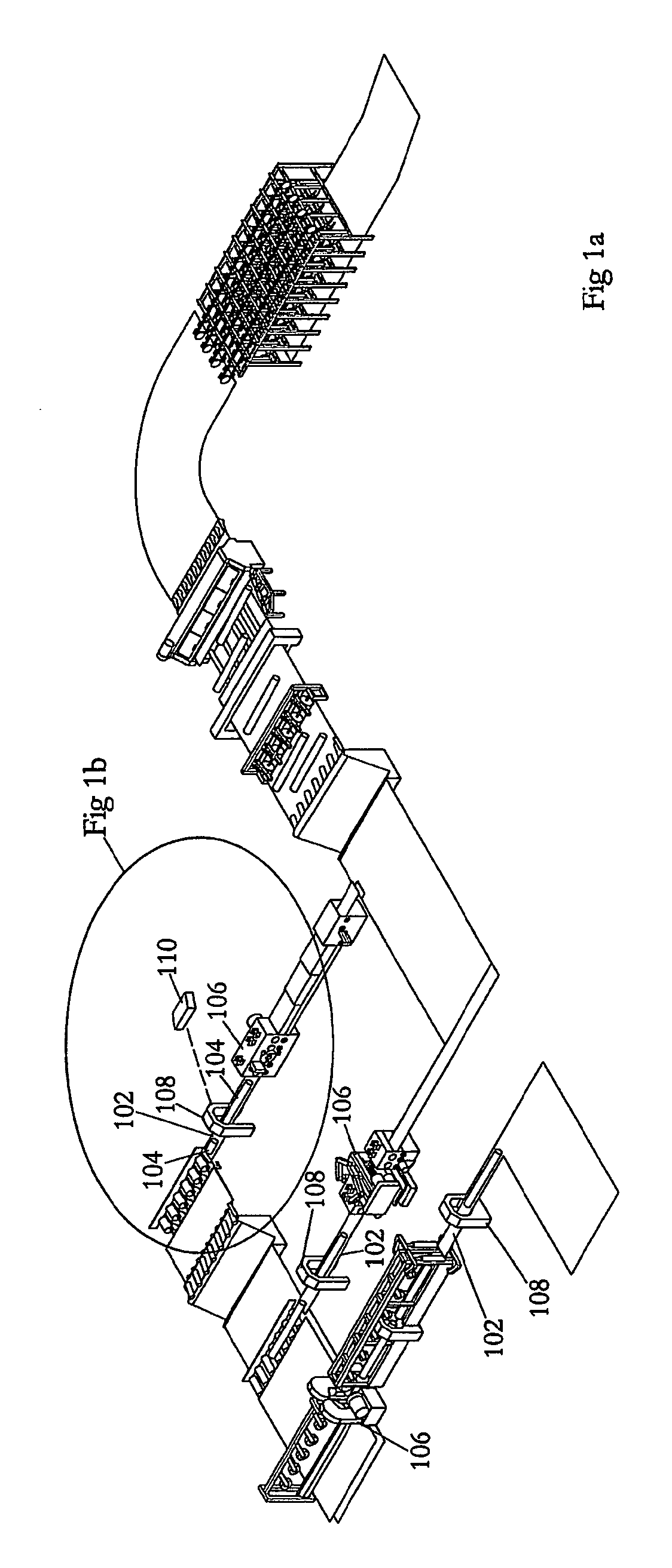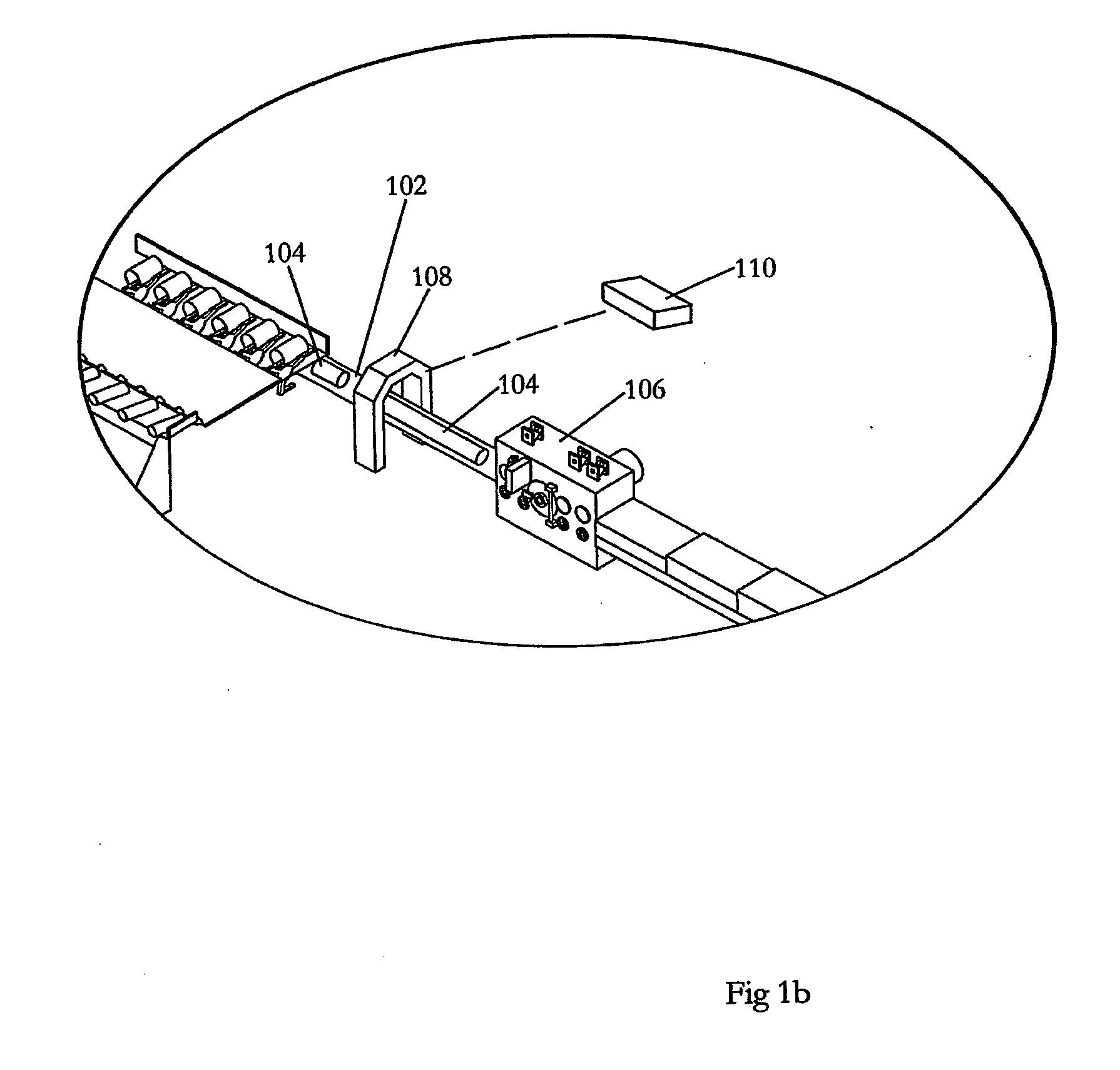Method of optimizing processing of successive workpieces through cutting machines
a cutting machine and workpiece technology, applied in the field of lumber manufacturing, can solve the problems of unnecessarily compromising the productivity requiring an increase in and reducing the throughput of the workpiece processing system, so as to reduce the gap between successive workpieces and reduce the gap. the effect of the gap and the gap reduction
- Summary
- Abstract
- Description
- Claims
- Application Information
AI Technical Summary
Benefits of technology
Problems solved by technology
Method used
Image
Examples
second embodiment
[0026]In the method according to the present invention, as illustrated in the flow chart of FIG. 3 the optimizer determines an optimized cutting solution for successive workpieces independent of the optimized cutting solution of the preceding or subsequent next (that is, first subsequent) workpiece 10. The processor independently determines the optimized cut pattern to be followed by the cutting devices for each of the workpieces 15. Prior to processing the preceding workpiece, the cutting device motion is started and the cutting device is pre-positioned according to a first optimized cut pattern of the preceding workpiece 20. While the preceding workpiece is being processed 25, the optimized cut pattern of the succeeding workpiece is transmitted to the positioners of the cutting device before the cutting device completes the lead-out segment of the workpiece being processed 30 such that the cutting device may begin re-adjusting and re-positioning according to the succeeding optimiz...
third embodiment
[0027]In the method according to the present invention, as set out in the flow chart of FIG. 4, prior to the cutting devices engaging and processing the workpieces, the optimizer compares the optimized cutting solution of the preceding workpiece with the optimized cutting solution of the succeeding workpiece 50 to determine a modified cut pattern. Preferably, the modified cut pattern is merely a modification of just the lead-in segment of the succeeding workpiece or just the lead-out segment of the preceding segment, or of both lead-in and lead-out segments such that adjustments between the successive workpieces may be minimized 55. The processor may decide to process the first workpiece according to the optimized cut pattern for that workpiece, but may decide to process the subsequent workpiece according to a modified cut pattern of the lead-in segment such that minimal or no re-adjustment or re-positioning of the cutting devices is required to adjust the optimized cut pattern of t...
fourth embodiment
[0028]In the method according to the present invention, as set out in the flow chart of FIG. 5, prior to the cutting devices engaging and processing the workpieces, the optimizer compares the optimized cutting solution of the preceding workpiece to be processed with the optimized cutting solution of the succeeding workpiece 50. The optimizer may then re-optimize the preceding workpiece 75 and process the preceding workpiece according to a re-optimized cut pattern 80 such that the cutting devices require minimal or no positioning between successive workpieces 85. Alternatively, the preceding workpiece may be processed according to the optimized cut pattern for that workpiece while the optimizer re-optimizes for the succeeding workpiece 75 to determine a re-optimized cutting solution such that the cutting devices require minimal or no positioning between successive workpieces 80. Whether or not the preceding workpiece or the succeeding workpiece is re-optimized, the optimized cut patt...
PUM
| Property | Measurement | Unit |
|---|---|---|
| volume | aaaaa | aaaaa |
| speed | aaaaa | aaaaa |
| lengths | aaaaa | aaaaa |
Abstract
Description
Claims
Application Information
 Login to View More
Login to View More - R&D
- Intellectual Property
- Life Sciences
- Materials
- Tech Scout
- Unparalleled Data Quality
- Higher Quality Content
- 60% Fewer Hallucinations
Browse by: Latest US Patents, China's latest patents, Technical Efficacy Thesaurus, Application Domain, Technology Topic, Popular Technical Reports.
© 2025 PatSnap. All rights reserved.Legal|Privacy policy|Modern Slavery Act Transparency Statement|Sitemap|About US| Contact US: help@patsnap.com



